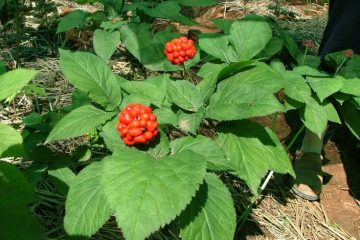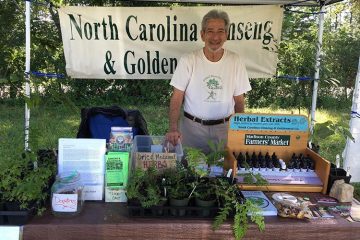by Diana Schmitt –
Madison County Sentinel, September 8, 1999, page 18.
A recent report ranked Madison County number two in North Carolina, behind Jackson, for, pounds of wild ginseng harvested annually, according to Ross Young, extension agent for agriculture.
In 1997, America exported two million ponds of cultivated ginseng root and 110,000 pounds of wild root to Asian countries.
The beginning harvesting date of September 1 has been in effect for several years, Young said. However, a new regulation has placed an export restriction on any wild ginseng less than five years. old.
The age of a ginseng root can be determined by counting the bud scale scars at the top of the root. There is one bud scar for each year. By all means do not dig a plant that has not produced a seed pot, Young stated.
Ginseng is a medicinal Herb native to our mountains. The roots of this perennial plant has been dug for decades and sold to China and other south Asian countries where it’s used as a major component of herbal medicines.
The life cycle of ginseng plant begins as a seed. A germinated ginseng seed wil produce a small, three leafed plant the first year. The plant dies down over winter and resprouts the next spring with five leaves.
The following years the plant begins to “fork,” producing a “two-prong,” “three-prong,” and eventually a “four-prong” ginseng plant.
It is not until around the 5th year that the plant is mature enough to produce seeds. This is where The. new regulation comes in to play, explained the extension agent. Over the years there has been significant decline in wild ginseng populations, he said.
The US Fish and Wildlife Service believes that a contribution factor to the decline is harvesting of plants that have not had the opportunity to produce seed.
There are two ways this can happen, Young said. One is harvesting ginseng before Sept. 1 (the first legal day of harvest), and the other is harvesting plants that are less than five years, having never produced seed.





